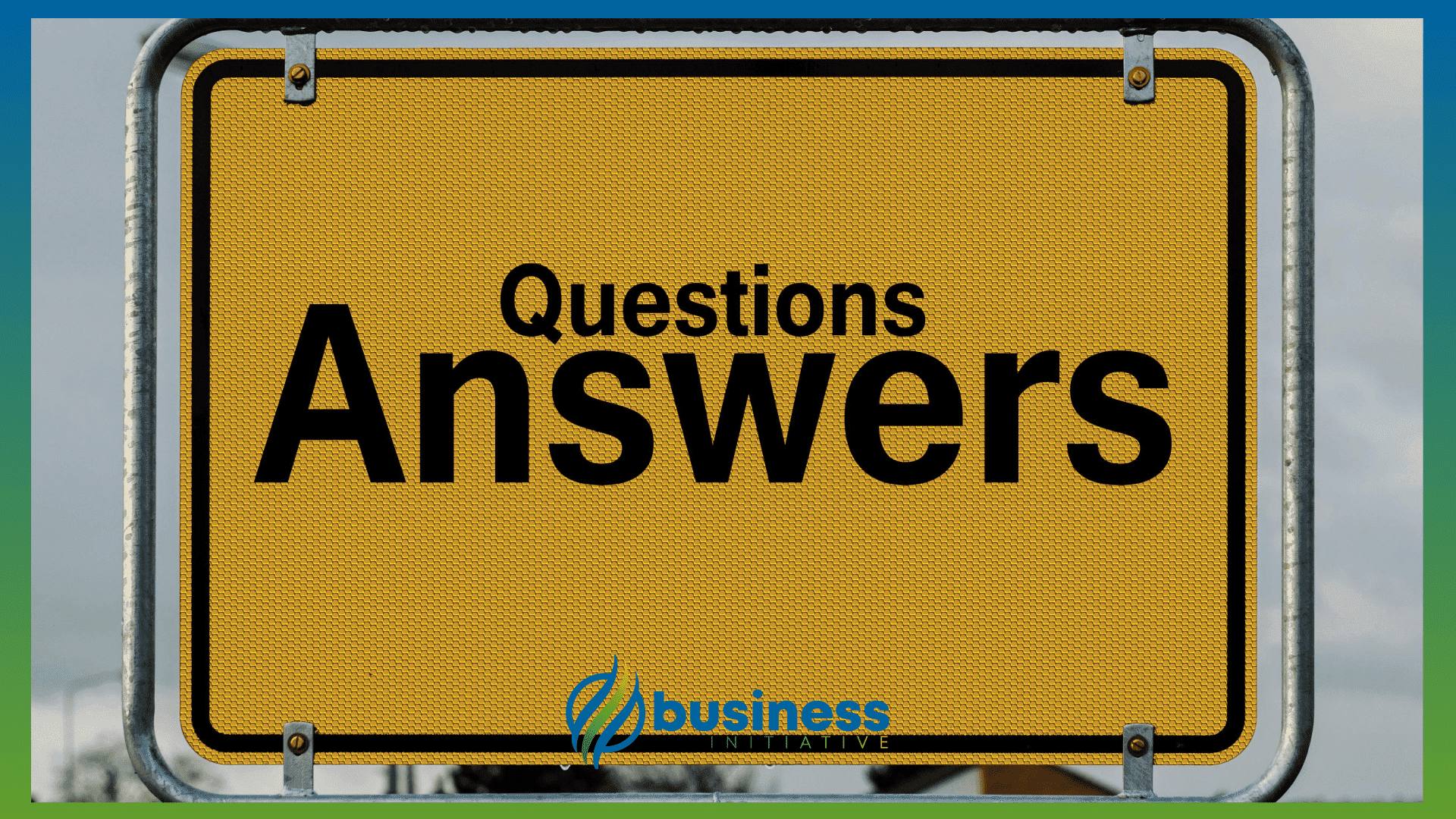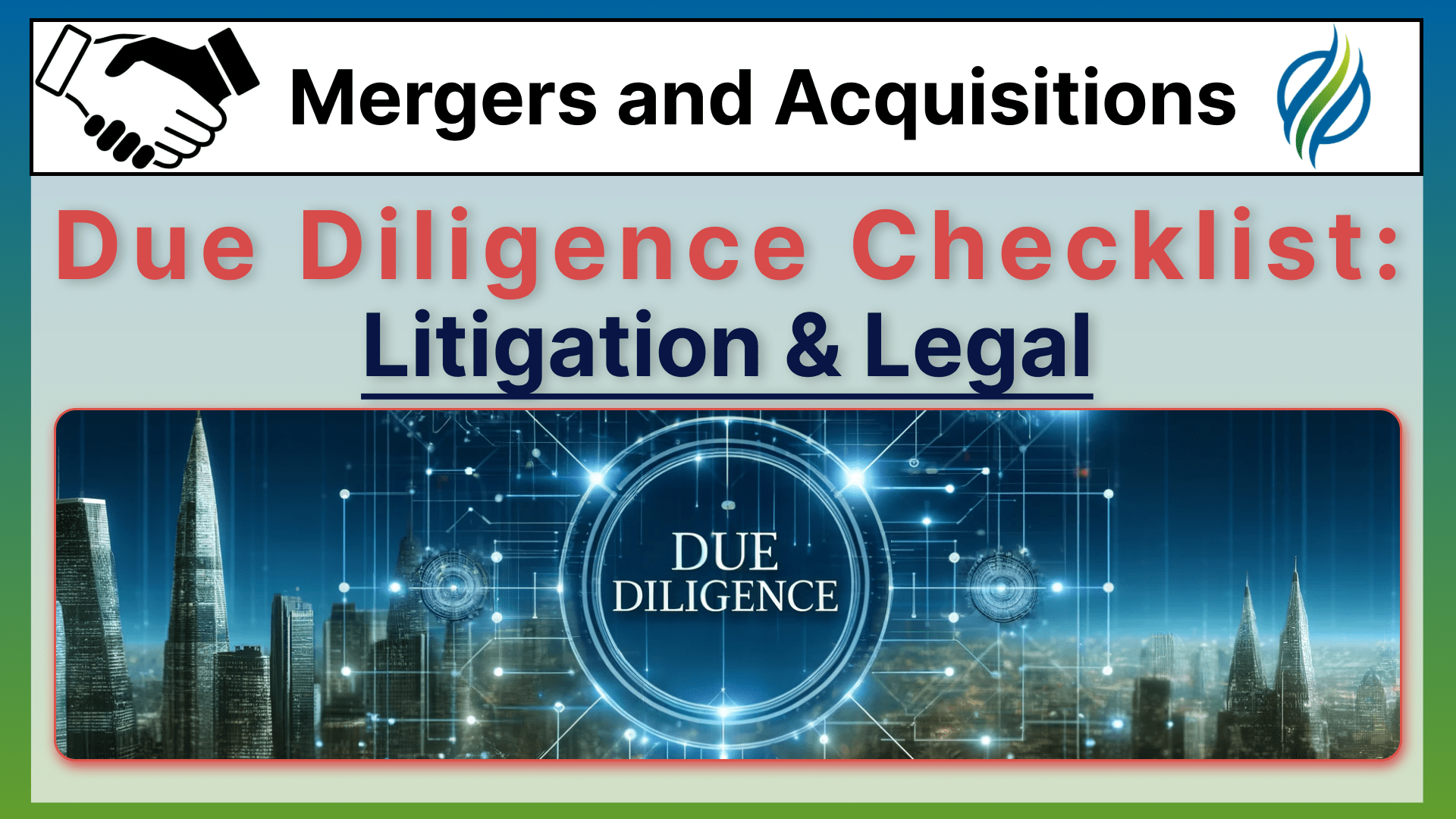In this article, you’ll dive deep into the world of litigation and legal due diligence in mergers and acquisitions.
Understanding these aspects is crucial.
It helps you identify potential risks and liabilities that could impact your transaction.
We’ll guide you through practical steps to review legal documents, assess compliance, and protect intellectual property.
This guide is packed with actionable advice.
Use it to safeguard your investments and ensure smooth M&A processes.
 Key Takeaways
Key Takeaways
- Thoroughly review all pending, threatened, and settled litigation to understand potential financial and reputational risks.
- Ensure regulatory compliance to avoid legal penalties and operational disruptions during the M&A process.
- Protect intellectual property by validating IP assets and reviewing incorporation documents for legal compliance.
- Verify adherence to industry-specific regulations to mitigate legal risks and ensure continuous operations.
- Use the provided resources and self-assessment questions to apply best practices in M&A due diligence effectively.
Assessing litigation and legal issues is critical in due diligence to understand the legal landscape of the target company.
This section involves a thorough review of all pending, threatened, or settled litigation, regulatory compliance, potential investigations, intellectual property (IP) matters, patents, incorporation documents, and adherence to industry-specific regulations.
Identifying and understanding these issues helps in evaluating potential risks and liabilities that could affect the transaction.
 Table of Contents
Table of Contents
To get the most out of this article, follow each section closely.
Pay attention to the self-assessment questions and resources provided.
They will help you apply what you learn directly to your M&A activities.
Ready to master litigation and legal due diligence?
Keep reading to arm yourself with essential knowledge and tools.

➤ MORE: Check out the FULL Due Diligence Checklist here
Review Pending, Threatened, or Settled Litigation
Pending, threatened, or settled litigation can have significant financial and reputational impacts on a company.
Understanding the nature and scope of these legal issues is essential to assess potential liabilities and risks.
This process involves a detailed examination of all ongoing and past legal disputes to gauge their potential impact on the company’s financial health and operational stability.
Practical Benefits:
-
Identifying potential financial liabilities.
-
Understanding risks that might affect transaction value.
-
Ensuring all legal disputes are disclosed and addressed.
Importance:
-
Mitigates unforeseen financial burdens.
-
Protects against reputational damage.
-
Provides a clear picture of the company’s legal standing.
Practical Steps:
-
Obtain Legal Documentation: Acquire all relevant documentation related to pending, threatened, or settled litigation, including court filings, settlement agreements, and legal correspondence. Consult with the target company’s legal counsel for comprehensive details.
-
Analyze Legal Cases: Review the details of each case to understand the claims, defenses, and potential outcomes. Assess the financial implications, including legal fees, potential damages, and settlement amounts.
-
Evaluate Impact on Business Operations: Determine how these legal issues could impact the company’s operations, reputation, and financial stability. Identify any patterns or recurring legal problems that could indicate systemic issues within the company.
Self-Assessment Questions:
-
What are the key details of each pending, threatened, or settled litigation case?
-
What are the potential financial impacts of these legal cases?
-
How have these legal issues affected the company’s operations and reputation?
-
Are there any recurring legal issues that indicate broader problems within the company?
-
What is the status of ongoing litigation, and what are the expected timelines for resolution?
Resources for Tools, Guides, and Additional Information:
-
PACER (Public Access to Court Electronic Records): For U.S. federal court cases.
-
Local Court Databases: For state or local litigation.
-
Company’s Legal Counsel: For detailed case information.
-
Bloomberg Law: For comprehensive legal research.
Assess Regulatory Compliance and Potential Investigations
Regulatory compliance is critical to avoid legal penalties and operational disruptions.
Assessing the company’s adherence to relevant regulations and any ongoing or potential investigations is crucial in identifying regulatory risks.
This involves a thorough review of compliance records and understanding the regulatory environment.
Practical Benefits:
-
Avoiding legal penalties and fines.
-
Ensuring smooth business operations.
-
Enhancing the company’s credibility and reputation.
Importance:
-
Protects against legal and financial repercussions.
-
Ensures alignment with industry standards.
-
Identifies potential areas of risk.
Practical Steps:
-
Review Compliance Records: Obtain records of regulatory compliance, including audits, inspection reports, and correspondence with regulatory bodies. Consult with regulatory compliance officers or legal counsel to understand compliance history.
-
Identify Regulatory Investigations: Determine if there are any ongoing or potential regulatory investigations involving the company. Assess the nature of these investigations and their potential impact on the company.
-
Evaluate Regulatory Environment: Understand the regulatory environment specific to the industry and how it applies to the target company. Identify any regulatory changes that could affect the company’s operations in the future.
➤ LEARN: Practical steps to mitigate the legalities of M&A
Self-Assessment Questions:
-
What is the company’s history of regulatory compliance?
-
Are there any ongoing or potential regulatory investigations involving the company?
-
What are the potential financial and operational impacts of these investigations?
-
How well does the company adhere to industry-specific regulations?
-
Are there any upcoming regulatory changes that could affect the company?
Resources for Tools, Guides, and Additional Information:
-
SEC EDGAR Database: For SEC filings and compliance records.
-
Regulatory Compliance Watch: For updates on compliance regulations.
-
Compliance Week: For news and resources on regulatory compliance.
-
Company’s Regulatory Compliance Officers: For specific compliance details and history.
Examine IP, Patents, and Incorporation Documents
Intellectual property and incorporation documents are fundamental to a company’s legal structure and competitive advantage.
Ensuring the validity and protection of IP assets and reviewing incorporation documents for compliance is crucial.
This process helps in safeguarding valuable assets and ensuring legal compliance.
Practical Benefits:
-
Protecting valuable intellectual property assets.
-
Ensuring legal compliance and operational stability.
-
Enhancing the company’s market position.
Importance:
-
Protects against IP theft and legal disputes.
-
Ensures the company’s legal foundation is solid.
-
Supports the company’s long-term strategic goals.
Practical Steps:
-
Review IP and Patent Documentation: Obtain a list of all IP assets, including patents, trademarks, copyrights, and trade secrets. Review patent filings, IP registration certificates, and any related legal documents.
-
Assess IP Protection Measures: Evaluate the company’s measures to protect its IP, including confidentiality agreements and IP policies. Identify any ongoing or potential IP litigation or disputes.
-
Examine Incorporation Documents: Review incorporation documents, including articles of incorporation, bylaws, and shareholder agreements. Ensure these documents comply with relevant laws and regulations.
Self-Assessment Questions:
-
What are the company’s key IP assets, and how are they protected?
-
Are there any ongoing or potential IP disputes or litigation?
-
How comprehensive and effective are the company’s IP protection measures?
-
Do the incorporation documents comply with all relevant laws and regulations?
-
Are there any issues or irregularities in the incorporation documents?
Resources for Tools, Guides, and Additional Information:
-
USPTO (United States Patent and Trademark Office): For patent and trademark information.
-
WIPO (World Intellectual Property Organization): For international IP resources.
-
Google Patents: For searching patent databases.
-
Company’s Legal Counsel: For specific details on IP protection and incorporation documents.
Verify Compliance with Industry-Specific Regulations
Compliance with industry-specific regulations is essential to avoid legal penalties and ensure smooth operations.
Verifying adherence to these regulations helps identify potential legal risks and ensure regulatory compliance.
This involves understanding the regulatory framework and reviewing compliance records.
Practical Benefits:
-
Avoiding industry-specific legal issues and penalties.
-
Ensuring continuous operations without regulatory disruptions.
-
Enhancing trust with stakeholders and customers.
Importance:
-
Ensures the company operates within legal boundaries.
-
Mitigates risks of legal and financial repercussions.
-
Supports long-term business sustainability.
Practical Steps:
-
Identify Industry-Specific Regulations: Determine the regulations specific to the industry in which the target company operates. Consult with industry experts or legal counsel to understand these regulations.
-
Review Compliance Records: Obtain records of compliance with industry-specific regulations, including audits, certifications, and inspection reports. Assess the company’s procedures for maintaining compliance.
-
Evaluate Impact of Non-Compliance: Identify the potential impacts of non-compliance, including legal penalties, operational disruptions, and reputational damage. Determine any corrective actions the company has taken to address non-compliance issues.
Self-Assessment Questions:
-
What industry-specific regulations apply to the company?
-
How well does the company adhere to these regulations?
-
Are there any records of non-compliance or regulatory penalties?
-
What are the potential impacts of non-compliance on the company?
-
How does the company ensure ongoing compliance with industry regulations?
-
Are there any industry certifications or audits that the company must maintain?
Resources for Tools, Guides, and Additional Information:
-
OSHA (Occupational Safety and Health Administration): For workplace safety regulations.
-
FDA (Food and Drug Administration): For regulations on food, drugs, and medical devices.
-
FTC (Federal Trade Commission): For regulations on advertising and consumer protection.
-
ISO (International Organization for Standardization): For international standards and certifications.
-
Company’s Compliance Officer: For detailed compliance records and procedures.
FAQs - Frequently Asked Questions About Litigation and Legal Due Diligence During the M&A Process

Why is litigation and legal due diligence important in M&A?
It helps identify potential risks and liabilities.
Ensures the transaction is legally sound.
Learn More...
Litigation and legal due diligence is crucial to uncover any ongoing or potential legal disputes that could affect the financial health and stability of the target company.
This process helps you understand the legal landscape, assess compliance with regulations, and protect intellectual property, thereby reducing the risk of future legal complications.
By thoroughly reviewing legal issues, you can negotiate better terms and ensure a smoother transaction.
- Identifies financial liabilities.
- Protects against reputational damage.
- Ensures compliance with legal standards.
How do I review pending, threatened, or settled litigation during due diligence?
Gather and analyze all relevant legal documents.
Learn More...
Start by obtaining all documentation related to the litigation, including court filings, settlement agreements, and legal correspondence. Consult with the target company’s legal counsel for comprehensive details.
Analyze each case to understand the claims, defenses, and potential outcomes, and assess the financial implications, such as legal fees and potential damages. Evaluate how these issues could impact the company's operations, reputation, and financial stability.
Identifying patterns or recurring legal problems can also indicate systemic issues within the company.
- Obtain court filings and settlement agreements.
- Consult with legal counsel for detailed information.
- Evaluate the impact on operations and reputation.
What are the key aspects of regulatory compliance I should focus on?
Review compliance records and identify ongoing investigations.
Learn More...
Obtain records of regulatory compliance, including audits, inspection reports, and correspondence with regulatory bodies. Consult with regulatory compliance officers or legal counsel to understand the company’s compliance history.
Identify any ongoing or potential regulatory investigations and assess their nature and potential impact. Understand the regulatory environment specific to the industry and any changes that could affect the company’s operations in the future.
This helps avoid legal penalties and operational disruptions, enhancing the company’s credibility.
- Review audits and inspection reports.
- Consult with compliance officers.
- Identify ongoing regulatory investigations.
How do I ensure the protection of intellectual property during M&A?
Review IP documentation and assess protection measures.
Learn More...
Obtain a list of all intellectual property assets, including patents, trademarks, copyrights, and trade secrets. Review patent filings, IP registration certificates, and related legal documents.
Evaluate the company’s measures to protect its IP, such as confidentiality agreements and IP policies. Identify any ongoing or potential IP litigation or disputes. Ensure the incorporation documents comply with relevant laws and regulations, and address any issues or irregularities found.
This ensures the protection and validity of valuable IP assets, crucial for maintaining a competitive edge.
- List all IP assets including patents and trademarks.
- Review confidentiality agreements and IP policies.
- Check for ongoing IP disputes or litigation.
What steps can I take to verify compliance with industry-specific regulations?
Identify applicable regulations and review compliance records.
Learn More...
Determine the regulations specific to the industry in which the target company operates. Consult with industry experts or legal counsel to understand these regulations.
Obtain records of compliance, including audits, certifications, and inspection reports. Assess the company’s procedures for maintaining compliance and identify potential impacts of non-compliance, such as legal penalties and operational disruptions.
Ensure any corrective actions have been taken to address non-compliance issues.
- Consult with industry experts.
- Review audits and certifications.
- Identify corrective actions for non-compliance.
What are the benefits of using the provided resources for M&A due diligence?
They offer comprehensive legal and compliance information.
Learn More...
Resources like PACER and Bloomberg Law provide detailed legal research and documentation, essential for understanding the litigation landscape.
SEC EDGAR Database and Regulatory Compliance Watch offer extensive compliance records and updates. Utilizing these tools ensures thorough due diligence, helping to identify potential risks and liabilities, protect intellectual property, and verify regulatory compliance, ultimately leading to more informed decision-making during M&A.
These resources streamline the due diligence process, saving time and reducing the risk of overlooking critical information.
- PACER for U.S. federal court cases.
- Bloomberg Law for comprehensive legal research.
- SEC EDGAR Database for compliance records.
In Summary…
Understanding litigation and legal due diligence is essential for any successful merger or acquisition.
This article has provided a comprehensive guide on how to navigate the complexities of legal issues, regulatory compliance, intellectual property protection, and adherence to industry-specific regulations.
By following the practical steps outlined, you can identify potential risks, safeguard your investments, and ensure a smooth M&A process.
Applying this information can significantly impact your business.
Thoroughly reviewing legal documents helps you uncover any hidden liabilities.
Ensuring compliance with regulations protects you from legal penalties and operational disruptions.
Protecting your intellectual property and adhering to industry-specific regulations ensures your business remains competitive and legally sound.
By using the resources and self-assessment questions provided, you can implement best practices in your due diligence process.
This not only mitigates risks but also positions your company for long-term success and stability.
Ready to take the next step?
Schedule a consultation call with Business Initiative today or use our contact form to get personalized advice and support.
Don’t miss out on our valuable insights and updates—subscribe to our Initiative Newsletter and follow us on X.
Take control of your M&A due diligence today and ensure a secure and prosperous future for your business.
Sources
- PACER (Public Access to Court Electronic Records): For U.S. federal court cases.
- Bloomberg Law: For comprehensive legal research.
- SEC EDGAR Database: For SEC filings and compliance records.
- Regulatory Compliance Watch: For updates on compliance regulations.
- Compliance Week: For news and resources on regulatory compliance.
- USPTO (United States Patent and Trademark Office): For patent and trademark information.
- WIPO (World Intellectual Property Organization): For international IP resources.
- Google Patents: For searching patent databases.
- OSHA (Occupational Safety and Health Administration): For workplace safety regulations.
- FDA (Food and Drug Administration): For regulations on food, drugs, and medical devices.
- FTC (Federal Trade Commission): For regulations on advertising and consumer protection.
- ISO (International Organization for Standardization): For international standards and certifications.


